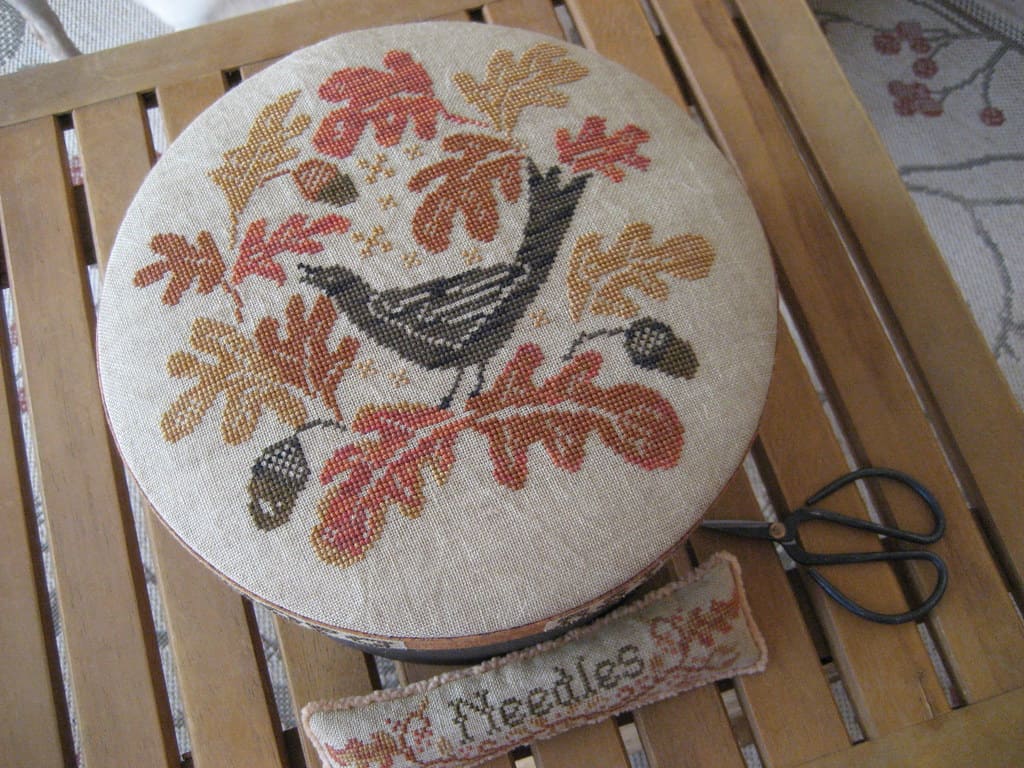We have really hit that lovely time of year in Texas in that we don’t need the air conditioner 24/7 and we can actually sit outside, stitch, read and enjoy the mild temperatures. Mind you, we aren’t complaining about our summer one bit though. It was very mild compared to some we have had in the past (I remember having more than 50 days of over 100 degree temperatures when I was pregnant with my daughter in 1998 – yuck). I cannot think of 10 such days this year. Yes, I know it has been quite some time since we have had a post, but we truly have good reasons for the absence. In July, we always take the month off so our members can enjoy time with their families. In August, we held our Member Stash Sale, so our meeting was abbreviated so everyone would have an opportunity to shop the goodies from other members’ stash collections. There were some very nice goodies to be had!
Now onto September, which was quite special, when we hosted Ms. Sandra Ball. Ms. Ball traveled from Salt Lake City, Utah to share with us her presentation on Victorian Mourning Traditions and Samplers as well as a discussion on cemeteries and tombstones. Ms. Ball’s presentation began with mourning traditions dating back to the medieval times up through modern times. Most of her discussions centered around the 1800s to early 1900s.
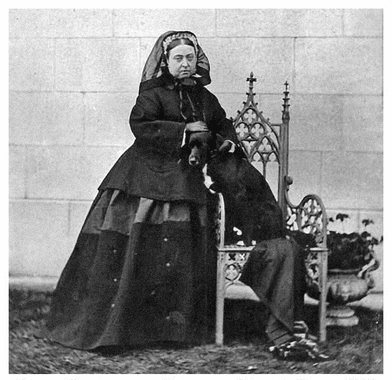
Before the modern era, did you know that the general mourning period for people was two years? American mourning traditions were very similar to European traditions. For the first year, widows wore all (dull) black widow’s weeds from head to toe. When widows had about 9 months left in their mourning period, they would begin to remove their veils and add jewelry to their attire. For the remaining 3 to 6 months of their mourning period, they began to slowly add color to their attire. However, if widows took off their mourning clothes too soon, they would be considered promiscuous. However, some people, such as Queen Victoria, would continue to wear their widow’s weeds for much longer periods of time. Queen Victoria wore her widow’s weeds for the remainder of her life, which was 40 years after Prince Albert passed away.
Women were not the only ones to wear mourning clothes. Men would wear black arm bands, and often were still wearing their arm bands when they got married to their next wife. Children generally wore white clothing with a
black arm band as well.
Ms. Ball also presented photographs of different types of mourning clothes as well as mourning jewelry. One item that was of particular interest was a “Tear Catcher”.

Soldiers would present these glass vials to their sweethearts when they were leaving for battle hoping that the vial would be full of their wife’s tears when they returned. However, if they did not return, the wife would sometimes take the vial to the soldier’s grave a year after their husband’s death and pour it on the grave.
If you find some of this information interesting, one book Ms. Ball recommended was Mourning Art & Jewelry by Maureen DeLorme.
Another aspect of mourning that Ms. Ball discussed was the tradition of having family portraits made with deceased family members. As photographs were not as readily available, and sometimes there may have only been a couple pictures to memorialize a family, when a family member passed, a portrait was taken with the deceased. If you’re interested in this topic, Ms. Ball shared with us another book, Beyond the Dark Veil: Post Mortem & Mourning Photography from the Thanatos Archive by Jack Mord.
We then were treated to a lovely slide show of different mourning samplers stitched to commemorate loved ones. There is a great description of these types of samplers on The Scarlet Letter website here along with a couple examples of original mourning samplers.
Lastly, Ms. Ball presented us with another slide show of a variety of grave yards she has visited. Early American headstones were rather harsh had a damning feel to them. But over time, you can see changes to headstone designs, which reflected the changes in the perception of death. Here is a Country Living slide show of historical graveyards in America to visit on your travels. Cemeteries can be interesting places to visit when you are traveling.
Finally, as you all know, headstones feature two dates, our birth and our death, but remember its what happens during the dash between the years that is important. As a side note to Ms. Ball’s discussion, she invited us to visit the Sampler Survey website to register and view samplers. We would like to extend a big thank you to Ms. Ball for such an enlightening evening.
Now on to our Member’s Show and Tell:





Robert’s eyesight is terrific as this is stitched on 52/60 linen with Tudor Silks.


Adam is a young stitcher who we would like to encourage in his stitching. Adam, keep up the great work!
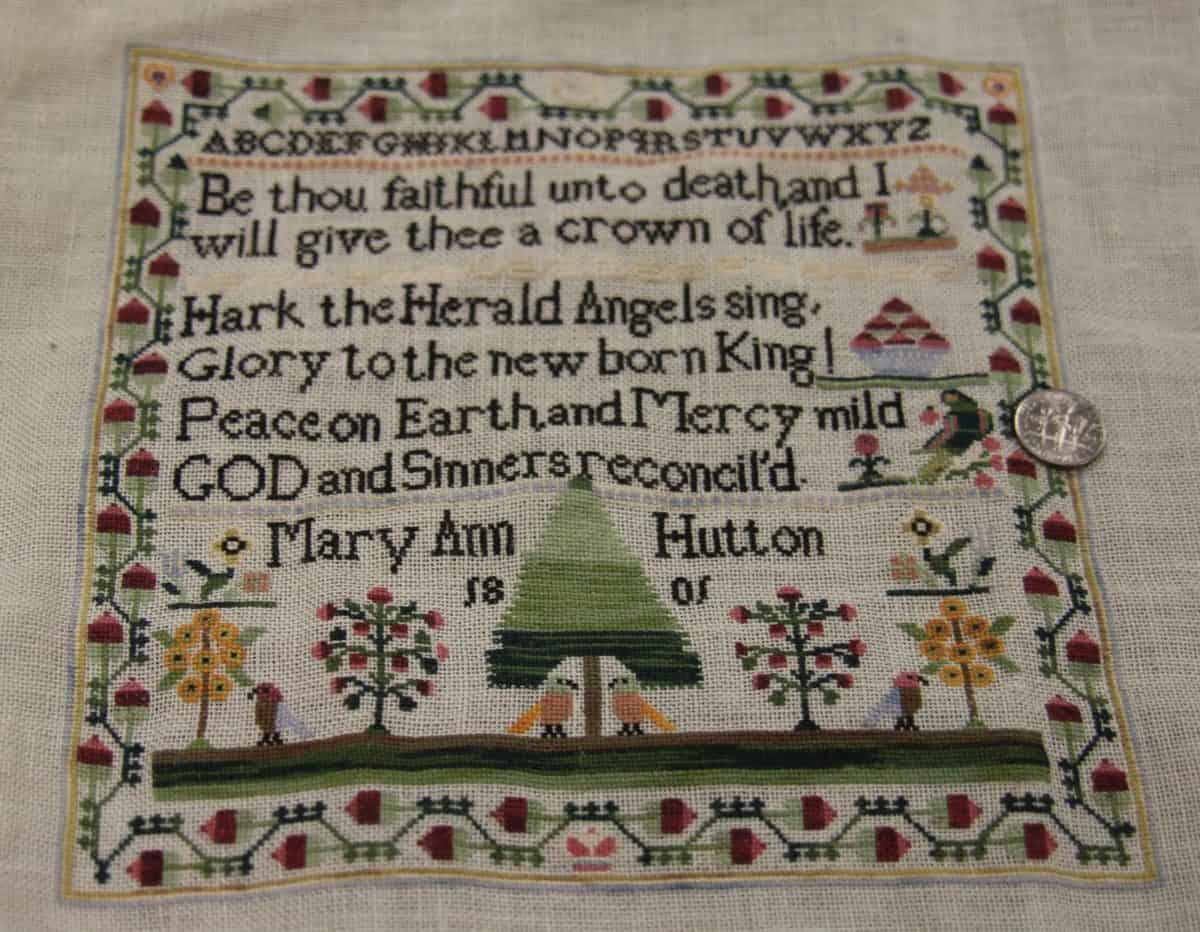

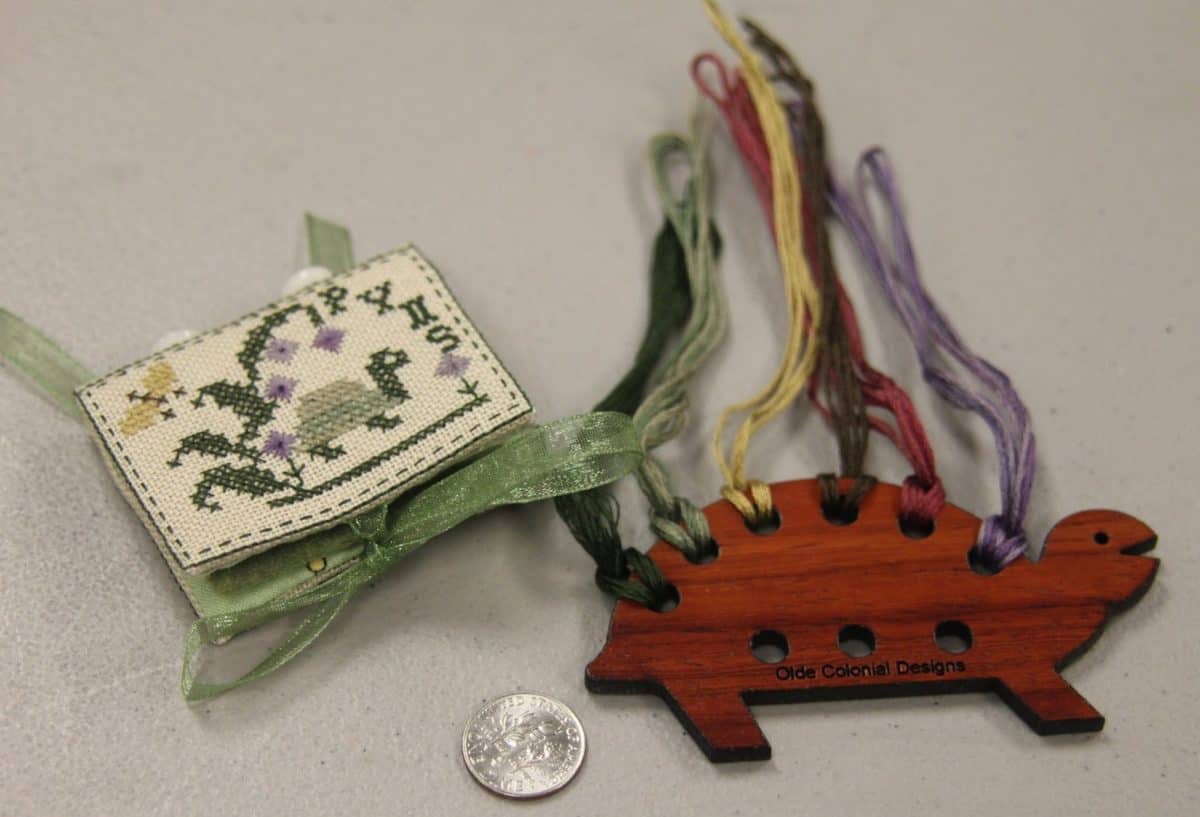

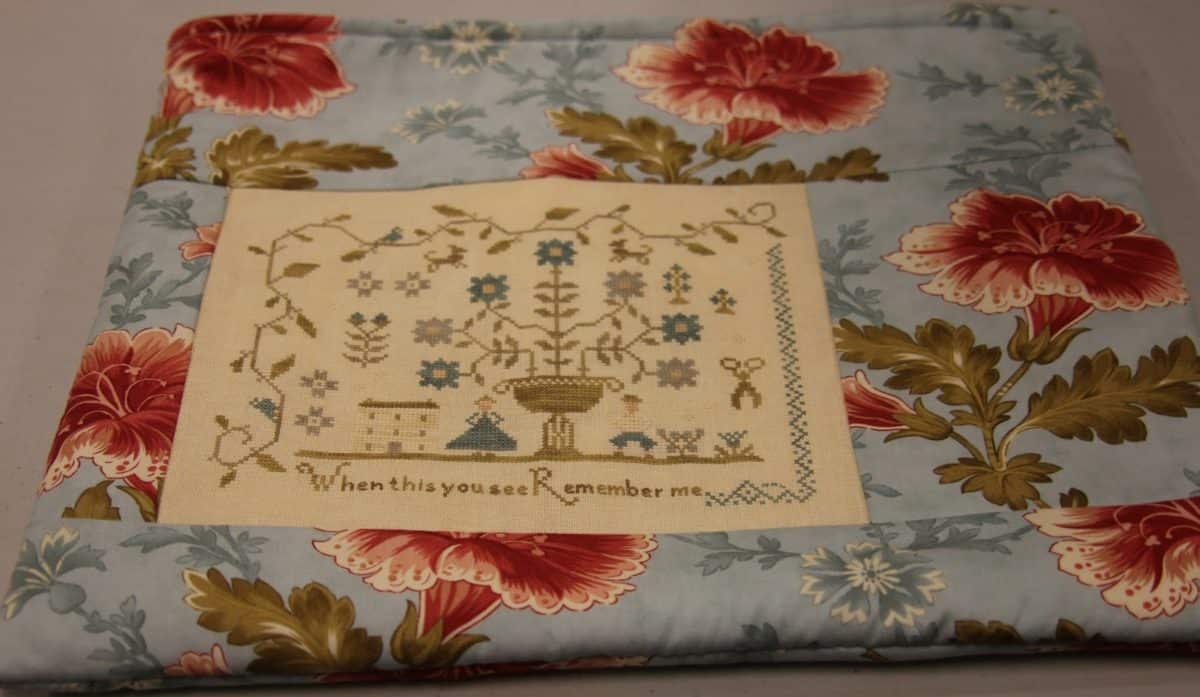
Project bag finished by Betty H.
We have a future grandma in our midst.
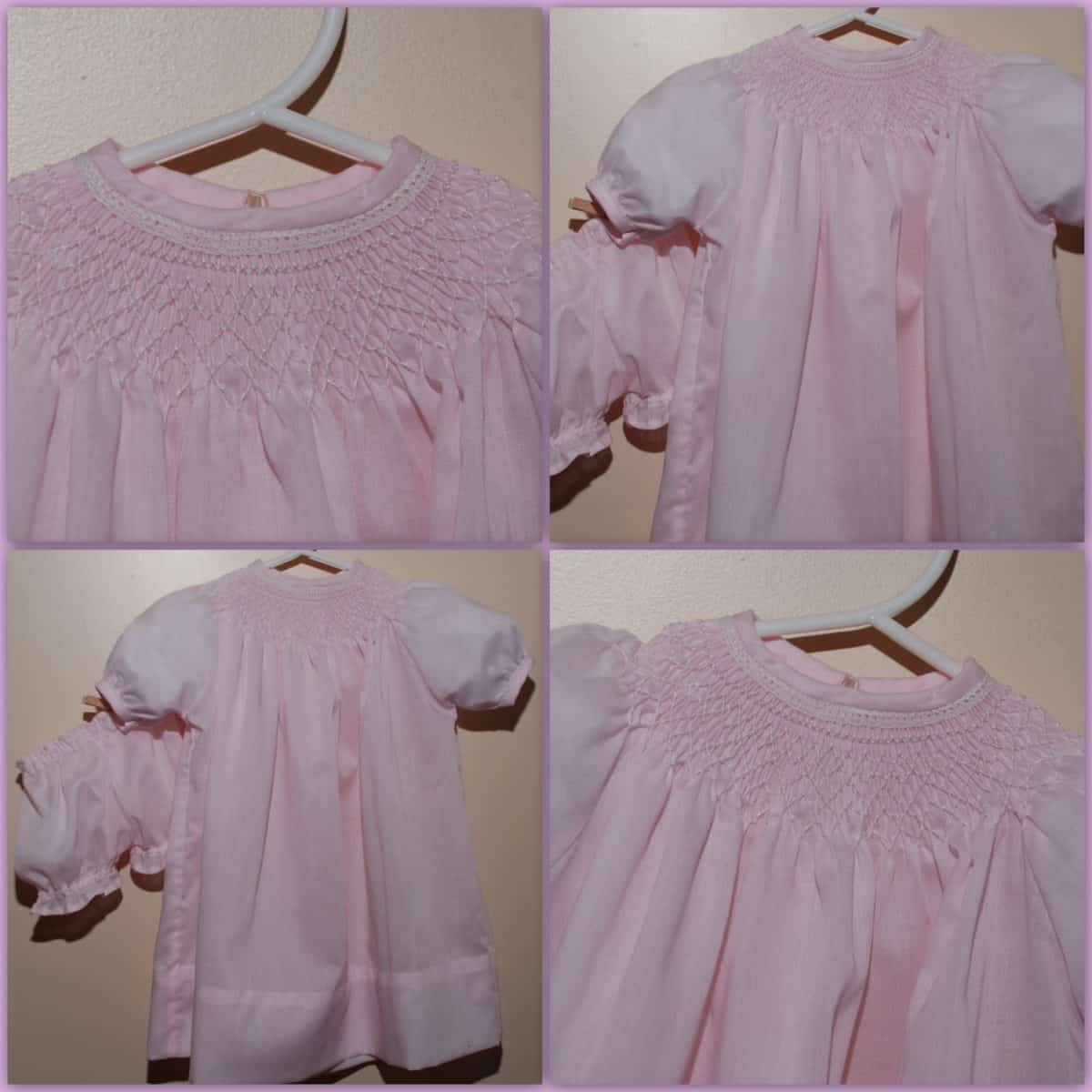
Pink Batiste, Geometric smocking with white DMC Perle Cotton #8

Barbie made one for each month. Carter Onesies, each with an iron-on design Barbie created from a printed graphic. She embellished them with eyelets around the neck, arm bands and legs, and threaded 1/8″ pink satin ribbon
through a sewn ribbon carrier.
Aren’t they so sweet? Congratulations to Barbie and her family.
Our final show and tell piece is just spectacular!

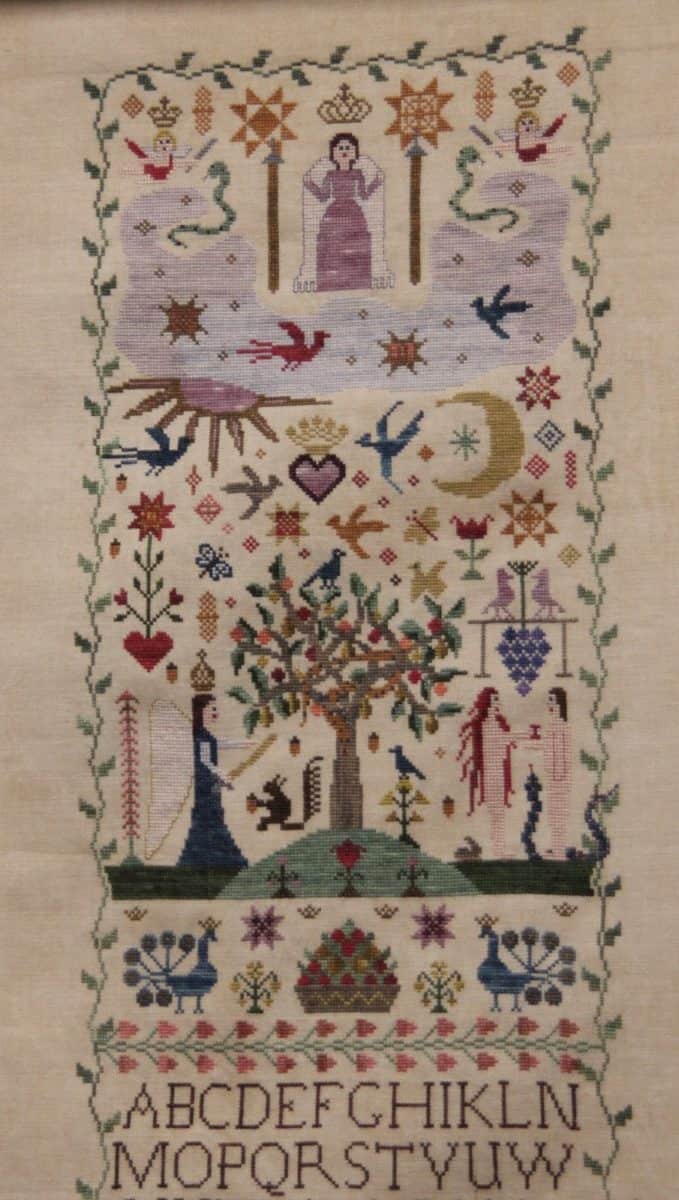




This piece is 36 inches long and is stitched on 40 count linen. Michelle worked on this sampler on Sundays for the past five years. She amazingly put in the final stitches during our September meeting to bring it completion. She also placed special messages in her sampler, with a tribute to Sylvia (another member of TRSG) as well as her furry feline friends. The grass on the lower portion of sampler is spectacular too, with one color going diagonally one way, and a lighter color running diagonally another way. Way to go Michelle!
The foliage has been losing its freshness through the month of August, and here and there a yellow leaf shows itself like the first gray hair amidst the locks of a beauty who has seen one season too many…. September is dressing herself in showy dahlias and splendid marigolds and starry zinnias. October, the extravagant sister, has ordered an immense amount of the most gorgeous forest tapestry for her grand reception.
Oliver Wendell Holmes


